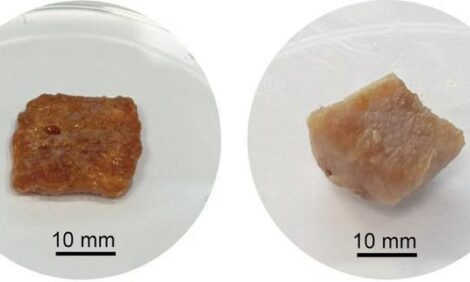



Spillover of pH1N1 to Swine in Cameroon: Investigation of Risk Factors
Following a study of the transmission of the porcine influenza virus of the H1N1 sub-type in Cameroon, US-based researchers concluded that allowing domestic pigs to roam freely is a significant risk factor for the spill-over of the virus from people to pigs.The 2009 pH1N1 influenza pandemic resulted in at least 18,500 deaths worldwide, according to Brenda Larison and colleagues at the University of California in the US. While pH1N1 is now considered to be in a post-pandemic stage in humans it has nevertheless spilled back into swine in at least 20 countries.
Understanding the factors that increase the risk of spillover events between swine and humans is essential to predicting and preventing future outbreaks, the researchers explain in their paper in BMC Veterinary Research.
They assessed risk factors that may have led to spillover of pH1N1 from humans to swine in Cameroon, Central Africa.
They sampled swine, domestic poultry and wild birds for influenza A virus at 12 sites in Cameroon from December 2009 while the pandemic was ongoing, to August 2012.
At the same time, they conducted point-count surveys to assess the abundance of domestic livestock and wild birds and assess interspecific contact rates. Random forest models were used to assess which variables were the best predictors of influenza in swine.
The researchers found swine with either active pH1N1 infections or positive for influenza A at four of the 12 sites. Only one swine tested positive by competitive ELISA in 2011-2012.
To date, they have found pH1N1 only in the North and Extreme North regions of Cameroon (regions in Cameroon are administrative units similar to provinces), though half of the sites are in the Central and Western regions.
Husbandry practices differ between the North and Extreme North regions where it is common practice to let swine roam freely, and the Central and Western regions where swine are typically confined to pens.
Random forest analyses revealed that the three best predictors of the presence of pH1N1 in swine were contact rates:
- between free-ranging swine and domestic ducks
- between free-ranging swine and wild Columbiformes, and
- between humans and ducks.
Sites in which swine were allowed to range freely had closer contact with other species than did sites in which they were kept penned.
Larison and colleagues concluded their results suggest that the practice of allowing swine to roam freely is a significant risk factor for spill-over of influenza from humans into swine populations.
Reference
Larison B., K.Y. Njabo, A. Chasar, T. Fuller, R.J. Harrigan and T.B. Smith 2014. Spillover of pH1N1 to swine in Cameroon: an investigation of risk factors. BMC Veterinary Research. 10:55. doi:10.1186/1746-6148-10-55
Further Reading
You can view the full report (as a provisional PDF) by clicking here.
Find out more about H1N1 influenza by clicking here.
March 2014







